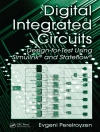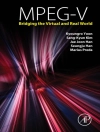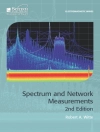1.1 Overview of Lab-on-Chip Laboratory-on-Chip (Lo C) is a multidisciplinary approach used for the miniaturization, integration and automation of biological assays or procedures in analytical chemistry [1–3]. Biology and chemistry are experimental sciences that are continuing to evolve and develop new protocols. Each protocol offers step-by-step laboratory instructions, lists of the necessary equipments and required biological and/or chemical substances [4–7]. A biological or chemical laboratory contains various pieces of equipment used for performing such protocols and, as shown in Fig. 1.1, the engineering aspect of Lo C design is aiming to embed all these components in a single chip for single-purpose applications. 1.1.1 Main Objectives of Lo C Systems Several clear advantages of this technology over conventional approaches, including portability, full automation, ease of operation, low sample consumption and fast assays time, make Lo C suitable for many applications including. 1.1.1.1 Highly Throughput Screening To conduct an experiment, a researcher fills a well with the required biological or chemical analytes and keeps the sample in an incubator for some time to allowing the sample to react properly. Afterwards, any changes can be observed using a microscope. In order to quickly conduct millions of biochemical or pharmacolo- cal tests, the researchers will require an automated highly throughput screening (HTS) [8], comprised of a large array of wells, liquid handling devices (e.g., mic- channel, micropump and microvalves [9–11]), a fully controllable incubator and an integrated sensor array, along with the appropriate readout system.
Daftar Isi
1: Introduction. 1.1 Overview of Lab-on-Chip. 1.2 From Macro to Micro Bioassays. 1.3 CMOS-Based Lab-on-Chips. 1.4 Objectives and Organization of book.
2: CMOS sensing electrodes. 2.1 On-chip microelectrode configurations. 2.2 Micromachining gold electrode on CMOS chip. 2.3 Electrical model of capacitive sensing electrodes. 2.4 Summary.
3: Capacitive Biochemical Interfaces. 3.1 Biochemical capacitive sensing methods. 3.2 Design of recognition element: An example for CGM. 3.3 Summary.
4: Capacitive Interface circuits. 4.1 LBCS vs. MBCS. 4.2 LBCS methods. 4.3 Core-CBCM interface circuit. 4.4 Core-CBCM ?? capacitive sensor. 4.5 Core-CBCM capacitive sensing system. 4.6 Summary.
5: Microfluidic Packaging Techniques. 5.1 Microfluidic packaging methods. 5.2 Direct-write microfabrication process. 5.3 Direct-write microfluidic packaging procedure. 5.4 Emerging applications of DWFP. 5.5 Summary.
6: Present and Future Technology of Capacitive Biosensors. 6.1 Conventional impedometric and capacitive measurement systems. 6.2 Handheld impedance measurement systems. 6.3 Towards fully integrated capacitive sensing Lo C. 6.4 Summary.
Tentang Penulis
Ebrahim Ghafar-Zadeh received the BSc and MSc degrees in Electrical Engineering from KNT and Tehran Universities, Tehran, Iran, in 1992 and 1994, respectively. In 1994 he joints the electrical engineering department at SCU University, Ahvaz, Iran as faculty memeber. During 2004-2008, he pursued a Ph D degree in electrical engineering at Ecole Polytechnique de Montreal, Canada. In January 2008 and September 2008, he received two fellowship award from NSERC Canada and Re SMi Q Quebec, Canada which allowed him to continue his research for fully integrated bacteria detection. The research interests of Dr. Ghafar-zadeh include the circuit and system design, implementation and packaging technologies for lab-on-chip applications.
Mohamad Sawan received his BSc in Electrical Engineering from Université Laval (1984), and MSc (1986) and Ph D (1990) both in Electrical Engineering from Université de Sherbrooke. He then completed post-doctoral training at Montréal’s Mc Gill University in 1991, and in that same year, joined École Polytechnique de Montréal, where he is currently a Professor of Microelectronics. Dr. Sawan’s scientific interests focus on the design and testing of mixed-signal (analog, digital and RF) circuits and systems; digital and analog signal processing; and the modelling, design, integration, assembly and validation of advanced wirelessly powered and controlled monitoring and measurement techniques. These topics are oriented toward biomedical implantable devices and telecommunications applications. Dr. Sawan is holder of the Canada Research Chair in Smart Medical Devices. He heads the Microsystems Strategic Alliance of Québec – Re SMi Q and is founder of the Eastern Canada Chapter of the IEEE-Solid State Circuits Society. He also founded the International IEEE-NEWCAS conference, co-founded the International Functional Electrical Stimulation Society, and founded the Polystim Neurotechnologies Laboratoryat Ecole Polytechnique. He is the editor of Springer mixed-signal letters, Chair of the IEEE Biomedical CAS (Bio CAS) Technical Committee, and member of the Biotechnology Council representing the IEEE-CAS Society. He has been awarded seven patents. He received the Barbara Turnbull Award for spinal cord research, the Medal of Merit from the Lebanese President (2005), and the J.-A. Bombardier Award from the Association Francophone pour le savoir (ACFAS). Dr. Sawan is a Fellow of both the Canadian Academy of Engineering and the IEEE.












